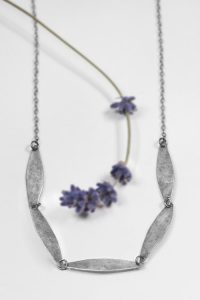Featured Artists
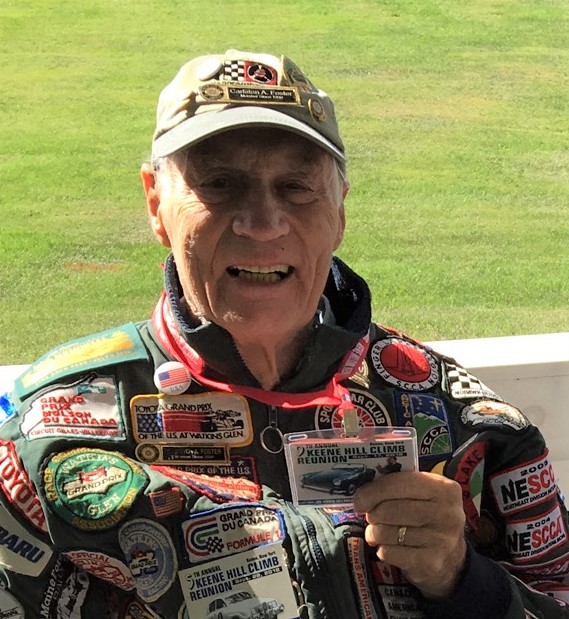
Founding member Carlton Foster
One of Valley Artisans Market’s founding members, Carlton Foster, passed away on Christmas Day, 2018. Though he hadn’t been a member for many years, we remember his humor and the wonderful craftmanship he brought to the market, selling his beautiful wooden utensils.
Carleton A. Foster, 83, of Jackson, passed away on Christmas Day, December 25, 2018 at the Center for Nursing and Rehabilitation at Hoosick Falls. Carleton was born a Shushan farm boy on September 20, 1935 and was the son of the late Anderson and Clara (Vaughn) Foster. He attended a two-room schoolhouse in Shushan and graduated from Salem Washington Academy. He had worked at Nash Rambler & Studebaker and also at Reynolds Tool & Die before starting his own business, “Puzzleworks” making children’s wooden puzzles. The business became C.A. Foster design & creator of fine cherry wood kitchen utensils and cherry wood sculptures.
Carleton was a charter member of the Valley Artisan’s Market, where his cherry wood creations were displayed and sold. He also was noted for the beautiful baritone voice and trained at the Troy Conservatory of Music. He was past President of the Washington County Historical Society and the Battenkill Snow Drifters. He was Past Master of the Cambridge Valley Lodge #481 F&AM Masonic Lodge; he was Lecturer of the Cambridge Valley #147 Order of the Eastern Star. Carleton also supported the Covered Bridge Association, the Cambridge Historical Society & Museum, the Historic Salem Courthouse.
He enjoyed Formula 1 racing and working at Lime Rock Park in Connecticut and also at Watkins Glen. Carleton did hill climb racing and was a Marshal for road races. He was noted at the Saratoga Auto Museum as a driver. He had a variety of interests which include painting and sketching and watching University of Connecticut Women’s Basketball. He started the annual tradition of the Shushan Bonfire.
In addition to his parents, he wa s predeceased by his first wife, Joan Tully Foster. Carleton is survived by his wife, Carol Brownell; his children, Lydia (Christopher) Owen of Columbia, SC and Hillary (Rev. Jarrett) Allebach of Worcester, MA; a brother, George Foster of Shushan; mother-in-law, Leta Tully of Cambridge; grandchildren, Vaughn, Aquilla, Blaize, Porsha, Ty, Wesley, Briana and Isaac. He is also survived by many nieces and nephews.
s predeceased by his first wife, Joan Tully Foster. Carleton is survived by his wife, Carol Brownell; his children, Lydia (Christopher) Owen of Columbia, SC and Hillary (Rev. Jarrett) Allebach of Worcester, MA; a brother, George Foster of Shushan; mother-in-law, Leta Tully of Cambridge; grandchildren, Vaughn, Aquilla, Blaize, Porsha, Ty, Wesley, Briana and Isaac. He is also survived by many nieces and nephews.
Donations may be made to:
Center for Nursing and Rehabilitation at Hoosick Falls Attn: Resident Fund
21 Danforth Street, Hoosick Falls NY 12090
The Michael J. Fox Foundation for Parkinson’s Research
Grand Central Station, P.O. Box 4777, New York NY 10163-4777
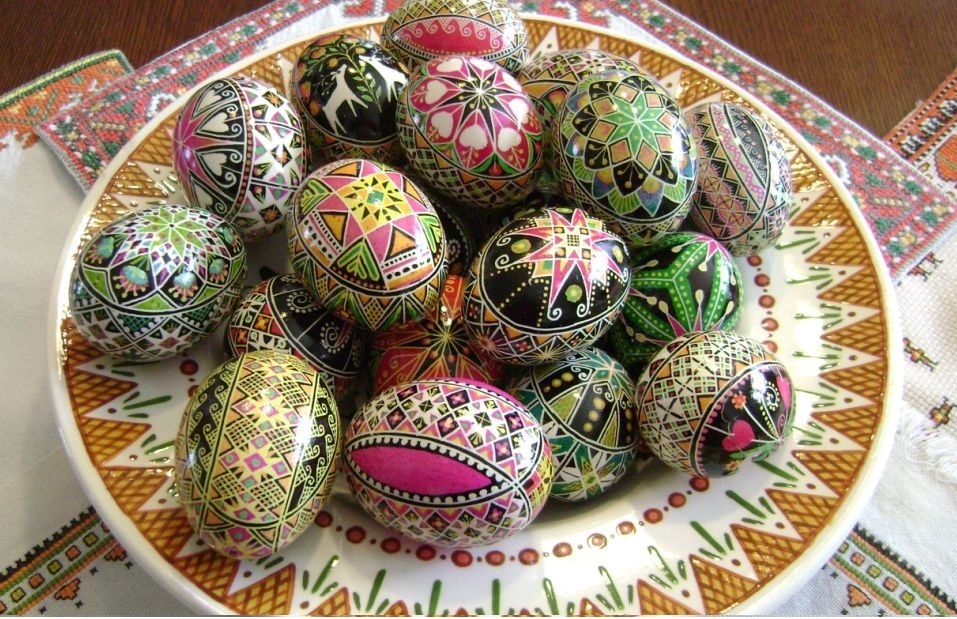
Welcome new member: Christine Levy
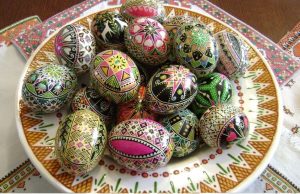 Christine Levy hunches over a white chicken egg. She sticks a quill in the flame of a candle to heat it then pokes the quill into a chunk of beeswax. As the smell of beeswax fills the air, she begins to write. Christine has been practicing her craft of Pysanka (traditional Ukrainian egg decorating) for more than 50 years. As a 2nd generation Ukranian, she learned her craft as a child, handed down through the generations. Her grandparents kept up with the traditions of the culture, especially dying and decorating eggs. “It‘s a clever folk art because it doesn’t take much to do it: beeswax, candle and dye,” she says. Christine begins with chicken eggs from local farms. Farm-bought eggs are better than store-bought because “they are stronger and take the dye better.” She uses a white egg that has not been hollowed out: a hollow shell is very porous and does not take dye as well as a full egg. Then she writes on the egg with beeswax. (The word pysanka comes from the verb pysaty, “to write,” as the designs are not painted on, but written with beeswax.)
Christine Levy hunches over a white chicken egg. She sticks a quill in the flame of a candle to heat it then pokes the quill into a chunk of beeswax. As the smell of beeswax fills the air, she begins to write. Christine has been practicing her craft of Pysanka (traditional Ukrainian egg decorating) for more than 50 years. As a 2nd generation Ukranian, she learned her craft as a child, handed down through the generations. Her grandparents kept up with the traditions of the culture, especially dying and decorating eggs. “It‘s a clever folk art because it doesn’t take much to do it: beeswax, candle and dye,” she says. Christine begins with chicken eggs from local farms. Farm-bought eggs are better than store-bought because “they are stronger and take the dye better.” She uses a white egg that has not been hollowed out: a hollow shell is very porous and does not take dye as well as a full egg. Then she writes on the egg with beeswax. (The word pysanka comes from the verb pysaty, “to write,” as the designs are not painted on, but written with beeswax.)
“Wherever you put the beeswax you are masking the color,” she says. “So I start with white then stick the egg in a light dye color like yellow.” She continues to write and mask more areas that she wants to keep yellow, then she dunks the egg into another dye color, working from light to dark. She keeps working until “[the egg] is black and covered with beeswax.” She removes the wax by sticking it in a toaster oven, though her ancestors would have held the egg over a flame to slowly melt off the wax.
Even after 50 years of creating, she still is enchanted and surprised when she removes the wax to see her creation. “You don’t know what it is going to look like. Every egg is different and takes dyes differently,” she says. When finished, Christine adds a coat of Polyurethene to make them shiny and also a bit stronger.
At this time of year, her decorated eggs can be used as ornaments on Christmas trees but they originated as an Easter tradition that is still alive and well in the Ukranian community. In her cultural tradition, one would make an egg as a gift where the pictures painted tell a story. Christine uses images like horses, which represent health and strength, and ribbons, which represent eternity and wisdom, on her eggs. “Deer and horses are my favorite images as well as flowers. It’s like handwriting – everyone has their unique handwriting and it’s the same for egg painting,” she says.
Ukranians also take pride in their ceramic work. “Many homes have a stove in the center completely lined with handmade tiles,” she says. Christine paints ceramics – porcelain and China – and has a lovely collection of pocket mirrors as well as small plates in the Market. To make the pocket mirror, she makes a pencil sketch then scans and prints it on thin plastic polymer. She fuses it to porcelain, like the back of the hand mirror, then decorates it with enamel paints. She fires it in an oven, not a kiln, until everything fuses to the porcelain.
“I love experimenting,” she says. “Every couple of years I feel like I am in a new zone. I just discovered last year how to get a really nice light green. I have been doing this for 50 years and I just figured it out. There’s also always something to learn.” Thankfully, Christine also teaches how to make her stunning eggs. “I love teaching because I don’t want to take all this knowledge with me.” Her ancestors would be proud.
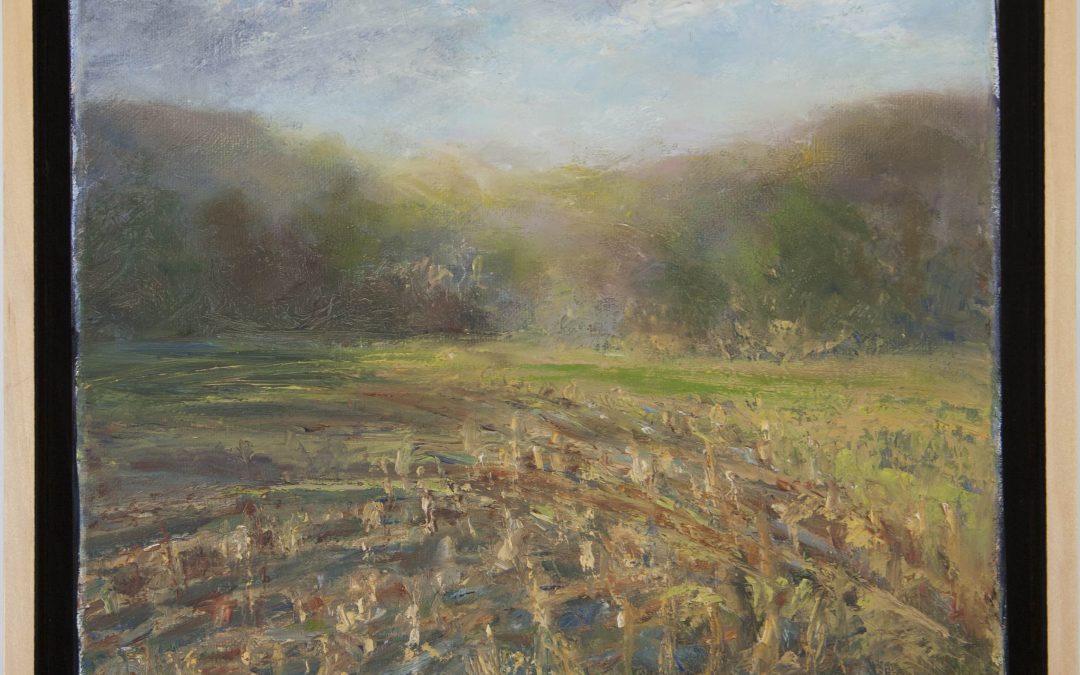
Painter Rose Klebes
Rose Klebes paints every day. If she had her way, she would paint all day, every day. She usually sneaks in a couple of hours early in the morning in her studio, spending some time painting before she starts her day. During the warmer summer months, she is trying to paint outside as much as possible.
When weather permits, Rose is “plein air” painting, or painting in the open air. She loves this method of painting because “you have to paint fast to capture the light before it changes,” she says. “When I paint in my studio, I tend to overthink my work.” She might keep considering and re-considering a piece, changing it and reworking it, doubting her instinct. “It can go on for weeks before I complete a piece,” she says. “But plein air painting allows me to work quickly; these paintings are more pure because they haven’t been labored over,” she says.
Rose paints using acrylic and oil paints. She uses acrylic paint when she is working on a quick study. Since acrylic dries quickly, she will often bring a canvas and paint with her to Valley Artisans in order to paint during her shift. By the time the shift is over, she may have new work to add to her display.
But she loves working with oil paints because they are “thick and buttery and I like the way they handle and show brush strokes.” These days, she has taken to painting on Masonite, an engineered wood, which she seals in three coats of gesso. She loves the slick surface of Masonite as opposed to rougher canvas, so that paint moves around a lot more easily.
And she is inspired by everything around: by changing light, by dark on dark, by a little pop of color in an otherwise quiet landscape. But she loves painting nature most and she has the phenomenal ability of remembering what she sees. She can look at a scene one day and then recreate it the next day without looking at it again. Because Rose has been an artist for more than 40 years, she has worked in many media: woodworking and furniture, mosaics, weaving and even was a very successful watercolor artist with newspaper stories abut her work to prove it. She has tried her hand at sculpting and would love to explore it more.
But for now, the process of painting makes her more excited than anything else. “I always love whatever I am working on,” she says. She will be introducing new desings in the coming months and is excited to show them. She feels they show a lot of the confidence and that she has grown as an artist and it shows.
“If I didn’t create every day, there’s no reason to get out of bed.”
Arleen Targan
Arleen Targan, of Greenwich, was a long-time member of Valley Artisans. She had to resign several years ago when she was diagnosed with Alzheimer’s disease. We are so sad to announce she died on Monday, July 2, 2018. Our condolences go to her family, especially her husband, member Barry Targan.
Born Arleen Caplan on July 12, 1934 in Abington, Pennsylvania, near Philadelphia, her surname was later changed to Shanken when she was adopted by her grandparents. Arleen graduated from the Philadelphia College of Art and began her long and successful career as an artist, drawing portraits on the Boardwalk in Atlantic City. It was there that she met the love of her life, Barry, to whom she would be married for sixty years. They would go on to live, work, travel, camp, and sail in many places in the United States and Europe, spending much of their lives in upstate New York.
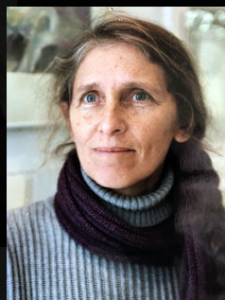 Arleen was a brilliant, gifted artist, excelling at many different art forms. She was especially known for her paintings of local landscapes and her portraiture at county fairs. Her granddaughters fondly remember numerous art projects with Grandma, who “made art fun.” Arleen’s creativity extended beyond the easel and into the kitchen. Always the gracious hostess, she delighted in preparing memorable meals for family and friends. Her love of the natural world was evident in the time she devoted to gardening, hiking, and swimming. A gentle, kind-hearted, and talented woman, Arleen will be deeply missed by her family and her many friends, including her fellow artists at the Valley Artisans Market in Cambridge, New York, as well as residents and staff at the Fort Hudson Nursing Center.
Arleen was a brilliant, gifted artist, excelling at many different art forms. She was especially known for her paintings of local landscapes and her portraiture at county fairs. Her granddaughters fondly remember numerous art projects with Grandma, who “made art fun.” Arleen’s creativity extended beyond the easel and into the kitchen. Always the gracious hostess, she delighted in preparing memorable meals for family and friends. Her love of the natural world was evident in the time she devoted to gardening, hiking, and swimming. A gentle, kind-hearted, and talented woman, Arleen will be deeply missed by her family and her many friends, including her fellow artists at the Valley Artisans Market in Cambridge, New York, as well as residents and staff at the Fort Hudson Nursing Center.
Arleen was predeceased by her parents, Harry and Ruth Caplan, and her sister Joan Shanken. She is survived by her husband, Barry, of Greenwich; son Anthony Targan (Holli Hart) of West Bloomfield, Michigan; son Eric Targan (Dollene Coolidge) of Belchertown, Massachusetts; and granddaughters Rebecca (Tomer) Dorfan, Alexandra Targan, and Hannah Targan. Those who wish to make a contribution in Arleen’s memory may make a donation to the Alzheimer’s Association or to a charity of your own choosing. To leave an online message for the family, please visit www.flynnbrosinc.com.
Basket maker Linda Corrow
Basket maker Linda Corrow was drinking cherry Kool Aid while sitting outside. That’s when she noticed that the hummingbirds wouldn’t leave her alone. They seemed to be attracted not only to the color of the red juice but also to the smell. She took the observation and applied it into her artwork, creating a small basket to use as a hummingbird nest. Since hummingbirds prefer small spaces for their nests and the shape of the basket provided not only a shelter but also a warm area due to its size and shape, they approved. But what they really responded to was the red lip on the opening. That’s because Linda dyed the reeds with red cherry Kool Aid.
Linda took up basket-making just 7 years ago. She was battling cancer and couldn’t work but was miserable sitting around the house focusing on how miserable she was. She tried to start some creative endeavors to occupy her mind. She took a painting class but hated it. She had always been curious about basket weaving so her daughter bought her a couple of basket-weaving kits. One was a kit with flat reeds and one included round reeds. She found that she not only loved basket-making but she had excellent finger dexterity and was successful at weaving baskets with the round reeds. She could turn, twist, pull, tug and manipulate the round ones much better than the flat reeds. The more she practiced the better she became. The better she was, the more she fell in love with the process.
She picks up one of her baskets and points to all the different weaving stitches that are in just one basket, each making a different pattern. She especially likes Japanese weaves because they are simple but she can modify them to make many new combinations of patterns. She has mastered locking reeds together to make an extremely durable basket that won’t fall apart, will sit flat and last a very long time. “These things are indestructible,” she says as she points to the lovely rounded bottom of one of her baskets. “You can throw it like a frisbee as far as you can and it will be just as strong.”
Not bad for someone looking for something to occupy her mind and her hands. The hummingbirds would agree.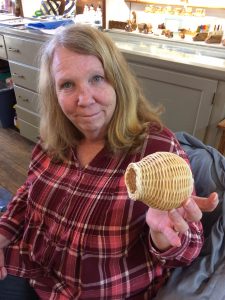
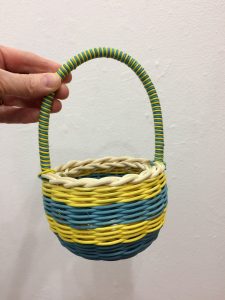
Glass artist Cheryl Gutmaker
Glass artist Cheryl Gutmaker has run out of peacock green-colored glass. Since this color was one of the most popular in last year’s designs, it is frustrating that she can’t get more. Two companies that supplied the glass closed two years ago. A third company has no projected date for when they will manufacture this color again.
But Cheryl takes the challenge in stride. She has shifted gears many times in her life when she has hit speed bumps. She recreated herself after losing her job as a music teacher due to budget cuts. She beat cancer. And then she began a career in glass when others might have thought of slowing down.
Cheryl has just returned from a four-day workshop at The Bullseye Resource Center in Mamareneck, NY. Her voice crackles with excitement about what she learned at this renowned glass center. “We played with different textures of glass in the kiln and experimented with firing different sizes of glass together,” she explains. “We explored what effect there would be if you fired the same piece at different degrees. How is it going to affect the material? How is it going to look different? How will the color change?” One of the thrilling parts of the workshop for Cheryl was playing with frit powder, or tiny bits of glass, that allowed her new possibilities in her artwork. “I have always wanted to make a weeping willow tree and never could get the effect until taking this glass course,” she says. (See photos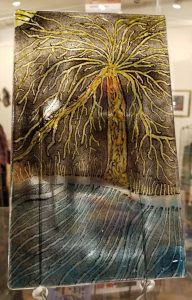 )
)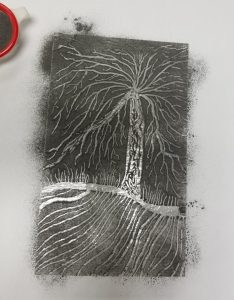
She’s come a long way from her artistic beginnings. She began her career as a glass artist creating beads for jewelry. She forged them with a torch, glass rods and an annealing kiln. After accumulating baskets of beads, she looked for a new way to use her kiln. “I started making soap dishes because I could fit three in the kiln.” They were a hit. Now Cheryl owns seven kilns and uses the small annealing kiln to make handles for her large serving platters and bowls.
Recently, Cheryl has been experimenting with more complex techniques. Painting with glass – called frit paintings – intrigues her the most. Creating a landscape takes enormous planning and a wealth of knowledge about fusing glass. “If I put a bird on a branch, I have to figure out if I should fire the bird first.” Cheryl explains that glass will react differently at different temperatures. The juxtaposition of pieces of glass also impacts the eventual artwork because of the presence of differing amounts of copper, sulphur and lead. “I want a nice amber in the background but amber is very reactive so there has to be clear glass between the amber glass and other pieces,” she says. There are also a finite number of times you can fire glass. “Some glass can only be fired three times before it starts to break down, while others can be fired 25 times.”
Her knowledge is dizzying but she is constantly learning. Sometimes, the best lessons come from mistakes. “When I put on little bits [of glass], I use Superglue to tack them into place. Sometimes the glue burns off before I want it to and the glass slides a bit. I was doing eyes for crabs and they slid so that the crab came out with googly eyes.” Her customers loved them so much that she changed her design.
But for now, Cheryl is trying not to make any mistakes. She is busy creating inventory for the prestigious Paradise City Festival in Massachusetts in May, facing many happy hours fusing glass. If you own one of Cheryl’s creations with peacock green in it, consider yourself especially lucky. It may be a while before a matching piece will be available.
Featured artist: Teru Simon
As a child, Teru Simon didn’t go to church. Her sister joked that their religion was visiting galleries and museums instead. Teru fondly remembers Tuesday and Saturday afternoons spent accompanying her father to art openings, where he knew all the artists.
Teru’s voice fills with wonder and pride when she talks about her childhood. “I had an incredibly rich life” surrounded by art and artists. Her mother was a poet, writer, composer and book author. Her father, along with three other artists, founded the Skowhegan School of Painting and Sculpture. She was brought up around a new wave of abstract expressionists who went there to study under her father. (She remembers having dinner with many renowned artists, and rattles off a list of names including the likes of David Hockney.)
Her grandparents were well-known collectors and she grew up with “heavy duty art on the walls, like Cezanne,” though she didn’t understand the value of these works. The art was simply “images that spoke to the family.”
Though she sells her ceramic work at VAM and is also a painter, Teru’s “first language” is sculpture. “My inspiration and sources for my art work come directly from the world around me,” she says. “I am a ‘humanist’ sculptor fascinated by people, their individual spirit, their specific gesture and the human metaphor.”
Because Teru has what she calls a three-dimensional memory, she is able to see a face and then go to her studio and sculpt it, without a photo. She often sees her sculptures in her mind before she begins them; an image comes to her in dreams or just pops into her mind as a completed sculpture. Then she recreates it with clay. She is also inspired by “the fact that everything is moving and changing. That really affects me.” Her pottery is influenced by the Asian aesthetic. “The markings on the ceramics and the shape of the pieces I make have Asian influence,” she says.
After experiencing a staggering number of losses in the last three years, she starting to get her feet back under her again. In the fall, she traveled to California to work with her friend and well-known ceramist Richard Hotchkiss to use his noborigama kiln. (This kind of wood-fired kiln has multiple chambers built into a hillside. Hotchkiss built the kiln in 1972 from scratch, even making his own bricks for the structure. A firing takes 24 hours and someone must stoke the fire round the clock.) She also spent a few weeks at Saratoga Clay Arts in Schuylerville making new work and is starting to come to life again in her creative endeavors.
Although Teru was a teacher to many ages over a career of 34 years, she has never stopped learning. She has just started taking a watercolor class, which she finds fascinating because it is so different from what she has done before. “I find what is there” instead of knowing beforehand what she is going to create. She would also really like to try her hand at blowing glass. But, for now, she is looking forward to “having the world quiet around me” and spending time in her studio. Amen to that.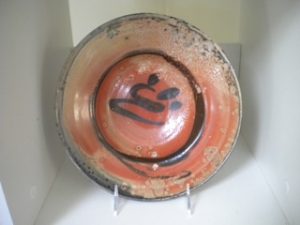
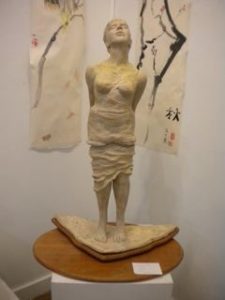
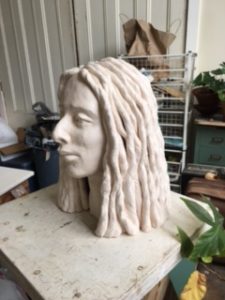

Martha Starke, botanical and paper artist
Martha Starke, botanical art cards
Petal People — whimsical figures made from pressed flowers and leaves — are a recent creation for paper artist Martha Starke of Saratoga Springs, NY.
For more than 20 years, Martha’s primary art has been making handmade paper. She specialized in creating plantable paper (handmade paper with seeds embedded in it) for weddings. During this time, she was pressing flowers and adding them to the paper pulp.
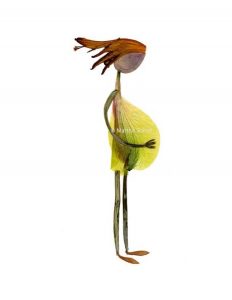 “I began making Petal People after seeing a craft magazine that showed a rooster created from autumn leaves,” she says. “I was so enchanted that I started playing around with pressed flowers that I was using for weddings. I loved making human figures with the botanicals. I framed a few and they sold right away so I knew I was onto something.”
“I began making Petal People after seeing a craft magazine that showed a rooster created from autumn leaves,” she says. “I was so enchanted that I started playing around with pressed flowers that I was using for weddings. I loved making human figures with the botanicals. I framed a few and they sold right away so I knew I was onto something.”
She didn’t sell her favorite ones, though, and soon gathered a collection of figures. She printed a few designs onto card stock. Petal People notecards were born. Now she carries more than 40 designs. She adds new ones every year and rotates some designs out or sells some in limited runs.
“My studio is a crazy mess of boxes; there was one time when I had almost 12,000 cards and envelopes sitting in boxes,” she says. “Now that I wholesale my cards across the United States, I need to have a lot on hand, ready to ship.”
Martha never knows when an idea for a design is going to hit her. She carries a flower press with her in case she finds a new botanical to pluck for future designs. “I was in California last year and pressed some red flowers — please don’t tell the hotel in Culver City that I was pilfering their plants — that turned out to be some of my favorites. They are called Ixora and they look like little pinwheels when they are pressed.”
New ideas usually start with the botanicals. “I may see the shape of a flower that looks like a skirt in motion, or a leaf that resembles a torso with arms and legs. I usually don’t have any idea what I am going to make until I start arranging the pressed botanicals, and see where I end up.” She is thinking about making a little girl holding a pinwheel from the Ixora she picked in California.
Martha has recently introduced 10 new designs to VAM, including some featuring loose, scattered leaves and flowers in seasonal colors that she calls Garden Greetings. Find all of her lines at VAM, at various markets across the nation found on her website, and online in her Etsy store.
Leslie Fuller
Some knew her as a quilter, some knew her for the makeup work she did for film and television, but we knew her as a talented multi-media artist, phenomenal salesperson and friend. Leslie Fuller was a member of Valley Artisans from 1988 until her death on Nov. 1, 2017. She will be missed.
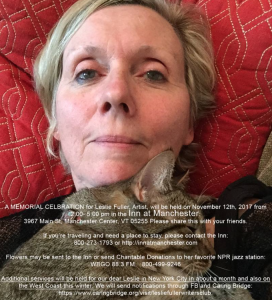
Leslie Fuller, an iconoclastic artist in several media including fabric art, drawing, makeup design and film making died at home in Sandgate, VT on November 1, 2017 after a long illness. She was 70.
Born in Pasadena, Ms. Fuller began working with cloth in Claremont, CA where she was raised. She studied in the California watercolor school at an early age, giving her a basis for color, technique, and a trained eye for the natural beauty of landscape and light. With her pan-creative approach to the arts, she developed a synergy of disciplines including drawing, painting, fashion design and photography, which lead to an interest in filmmaking.
Ms. Fuller completed her MFA at The London Film School in 1969. She returned to California to continue studying photography and made practical Mandala Quilts from re-purposed cloth. Working large paralleled her ‘big screen’ imagination with full size quilts used both on and off the wall.
She moved to Sandgate, VT in 1971, enjoying a fruitful period as an Art Quilt maker, focusing on commissioned appliqu landscape pieces, which were collected and included in many gallery shows and fiber-art publications. She also produced small illustrations on paper, contrasting and complimenting the large quilted pieces.
‘As my “Clothworks” evolved, I was always looking for a fresh palate to express my vision’, Ms. Fuller said. This led her to begin painting on white silk satin with airbrush dyed elements. From her fascination with the play of light on naked silk and an appreciation of the white-on-white quilted works from the 19th century, Ms. Fuller was inspired to begin making “Quilted Drawings”. Combining her pen and ink skill in contour drawing and using her sewing machine as the drawing tool, the “Quilted Drawing” became a sensual, three dimensional representation of her subjects as abstract designs in clothing or framed art.
Ms. Fuller began her second career as a Make-up artist for motion pictures and television in New York City in 1980, the ‘day job’ to support her art work. This combined her skills in painting and photography with her keen interest in the interaction of people. Working on productions like “The Juror”, “You Me and Dupree” and “Wall Street: Money Never Sleeps” gave Ms. Fuller a stimulating contrast to the simpler Vermont life.
Ms. Fuller’s philosophy was, ‘Being an artist is a point of view. Everything an artist does with that intent, is art.’ Ms. Fuller is survived by Rick Raphael, her husband of 37 years, their son Sean Raphael and her two brothers, Dr. James Fuller, MD and Tom Fuller.
Featured artist: The Quiet Woods
“Carefully cutting and filing each small shape by hand, we then gently soften the points and edges smoothing them until they are perfect. Using a very light hand while leaving subtle marks on the surface we create textures with fine rosewood hammers and steel wool. Oxidizing and polishing the delicate shapes comes next and what is revealed after this step is always an exciting moment. Each piece has its own personality. Once the silver shapes are connected to the chain, the pieces dance and come alive.” ~ The Quiet Woods
Kim Sheridan-Dugmore and her mother, Mue, are the creative team behind The Quiet Woods jewelry. They sell their delicate sterling silver jewelry at Valley Artisans. This article was reprinted from the Gazette with edits to shorten for space.
By Cady Kuzmich
Gazette Reporter
Kim Sheridan-Dugmore grew up in Brooklyn making daisy chains and painting rocks with her mother, Mue. Her father Peter was an architect in the big city. Design has been calling to her from the beginning. When her parents decided to move upstate to the small village of Round Lake, she decided to stay in the city. Having always been “a maker,” Sheridan-Dugmore was intent on making it in the world of design. She worked as a decorator but eventually moved upstate over a decade ago when her eldest son was five. She lives just around the corner from her parents.
While a lot has changed since those daisy-chain making days in Brooklyn, some things remain the same. Sheridan-Dugmore and her mom are still in the business of creating art together — but this time they’ve turned their art into a business. The two have started their own jewelry line called The Quiet Woods. The mother-daughter duo has been turning delicate pieces of sterling silver into unique necklaces and earrings for five years now. “Mom and I, together, it’s a partnership,” said Sheridan-Dugmore. She said they’re basically self-taught, with the exception of one class they took in the beginning for some basic understanding.
Her mother worked as a dental hygienist. For years she was tasked with the intricate work of probing inside people’s mouths with fine dental instruments, so working on a very small scale with jewelry is “not dissimilar” according to Sheridan-Dunmore. The idea for The Quiet Woods came to fruition five years ago after Sheridan-Dugmore had her second son and decided she needed to make time for her creative endeavors. “I didn’t want to go back to the corporate life. I wanted to do something creative,” she said. Sheridan-Dugmore now works in municipal government as a treasurer in the mornings and concentrates on The Quiet Woods later in the day. While she noted The Quiet Woods isn’t a full time gig, she admits she’s always thinking about it in some way. While Sheridan-Dugmore is at work in the morning, her mother can likely be found working away on new pieces for the Quiet Woods at her kitchen table.
Find out more about Quiet Woods on their website or come into the Market and see their delicate work in person.
